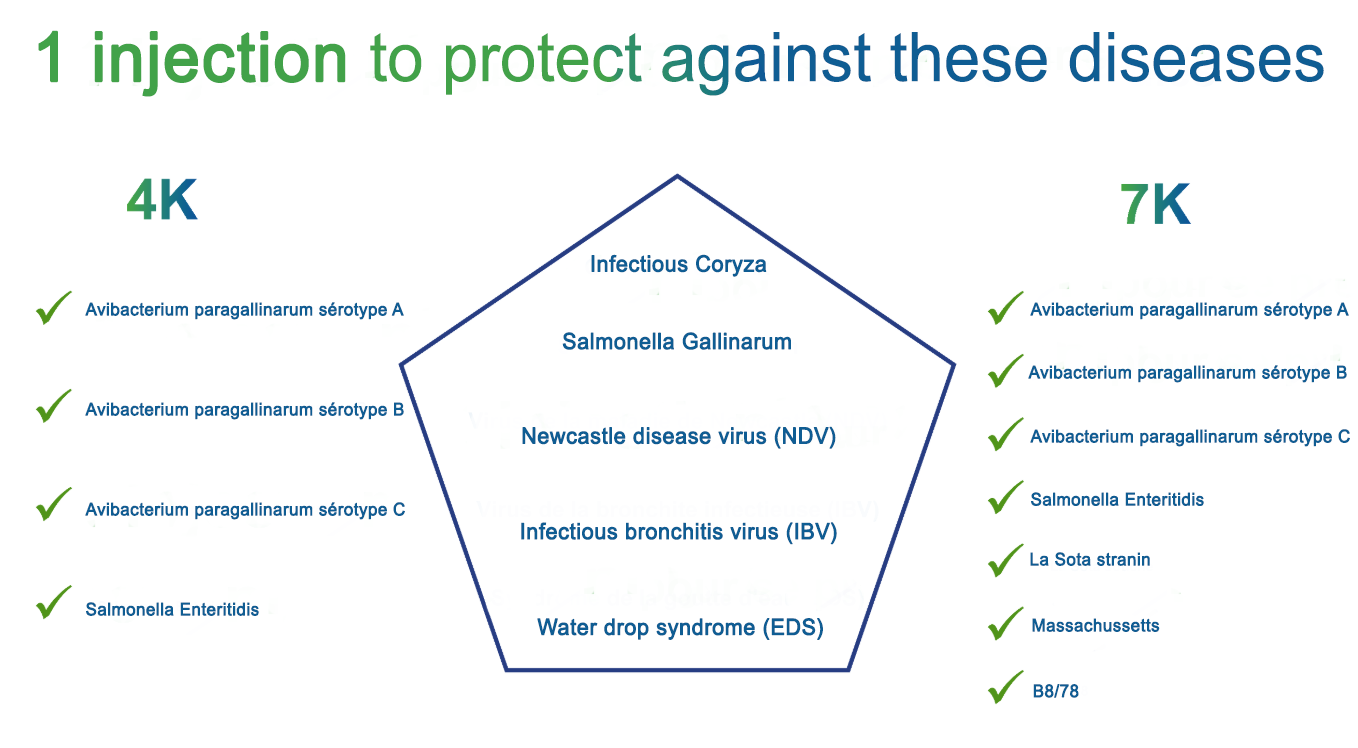
Reliability for laying hens
A program with a unique combination of protection against Newcastle disease, Infectious bronchitis, Egg-drop syndrom, Coryza and salmonella.

Simplify your vaccination programme with Ceva's new technology vaccines
Helping you achieve your safety and efficacy goals with fewer vaccine applications.
‘Less is more’ describes what we want to make available to all egg producers worldwide to ensure their success right from the hatchery.

LESS IS MORE
- Les handling
- Less stress
- Less us of antibiotics
- More uniformity
- More protection
- Greater profitability
Ceva programme for eggs
Safer and simpler vaccination
Ceva’s EGGS programme is a comprehensive set of services and standard operating procedures (SOPs) designed to optimise the preparation, application and monitoring of poultry vaccines. Unique equipment, such as the Desvac IMVAC®, has been developed to enable precise injection of vaccines into the mammary muscle of each bird, while guaranteeing the safety of the bird and the operator.
Cross-protection against Salmonella Gallinarium
In an independent laboratory study, commercial brown pullets were vaccinated with Cevac® Corymune 4K at 5 weeks, followed by a booster with Cevac® Corymune 7K at 9 weeks. Another group served as controls. At 12 weeks of age, all birds were exposed to a high dose of Salmonella Gallinarum orally, and mortality was monitored for 4 weeks after vaccination.
Corymune boosts protection against Newcastle and Gumboro disease during the laying period.

Infectious bronchitis under control for healthy birds from day one
INFECTIOUS BRONCHITIS
Avian infectious bronchitis (IB) is probably one of the most widespread poultry diseases in the world, due to its highly contagious nature. It is caused by a gamma coronavirus that affects the respiratory, urinary and reproductive systems of chickens, causing different disorders depending on the tissue tropism characteristics of the invading viral strain.
Another problem is the high mutation rate and recombination capacity of the IB virus. This is why there is not just one IB virus, but many IB viruses.
 POULTRY
POULTRY